Are you captivated by the vibrant colors and diverse shapes of Dahlias but have limited garden space? Fear not, for growing dahlias in pots is the perfect solution to enjoy these stunning flowers without a sprawling garden. Container gardening provides flexibility, better pest control, and the ability to move your plants as needed to ensure the perfect amount of sunlight.
In this comprehensive guide, we will walk you through every step of the process, from selecting the perfect dahlia varieties for your containers to overwintering your precious tubers. By the end of this journey, you will be well-equipped to cultivate your own captivating array of dahlias, bringing life and color to any space.
- Short Summary
- Selecting the Perfect Dahlia Varieties for Containers
- Preparing the Ideal Container
- Potting Soil Essentials
- Planting and Caring for Dahlias in Pots
- Supporting and Maintaining Dahlias in Containers
- Overwintering Dahlias in Pots
- Troubleshooting Common Dahlia Problems
- Summary
- Frequently Asked Questions
Short Summary
Select the perfect dahlia variety for your container garden and prepare an ideal container with optimal size, depth, drainage & material.
Provide adequate water retention in soil mix and regular watering to ensure healthy growth of vibrant blooms.
Maintain beautiful looking dahlias through staking, pruning/pinching & deadheading. Overwinter them carefully for springtime blooms!
Selecting the Perfect Dahlia Varieties for Containers

With over 42 species and thousands of cultivars, selecting the perfect dahlia variety for your container garden might seem like a daunting task. But fear not, we’re here to guide you through the process. The key is to consider.
The size of your container
Your intended use for the flowers (such as cut flowers or simply for display)
Your personal preferences when it comes to color and shape
By taking these factors into account, you’ll be able to choose the ideal dahlia variety for your container garden.
When it comes to size, dahlias come in a range of sizes from dwarf varieties to large varieties.
Dwarf Dahlias
If you have limited space or small pots, dwarf dahlias are an excellent choice. These compact dahlia varieties can reach up to 24 inches in height and width, offering a burst of color in a small package. Their semi-double flowers come in various hues, making potted dahlias a vibrant addition to any container garden.
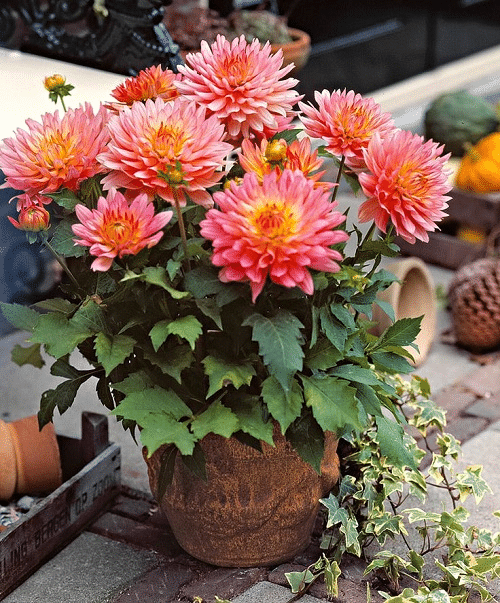
To ensure their success, select a container with a minimum width of 12 inches and provide adequate drainage, nutrient-rich soil, and regular watering.
Small-Flowered Dahlias
For a more delicate touch, consider small-flowered dahlias. These hardy plants produce dahlias that bloom between 2-4 inches in size, offering a variety of colors and shapes to choose from.
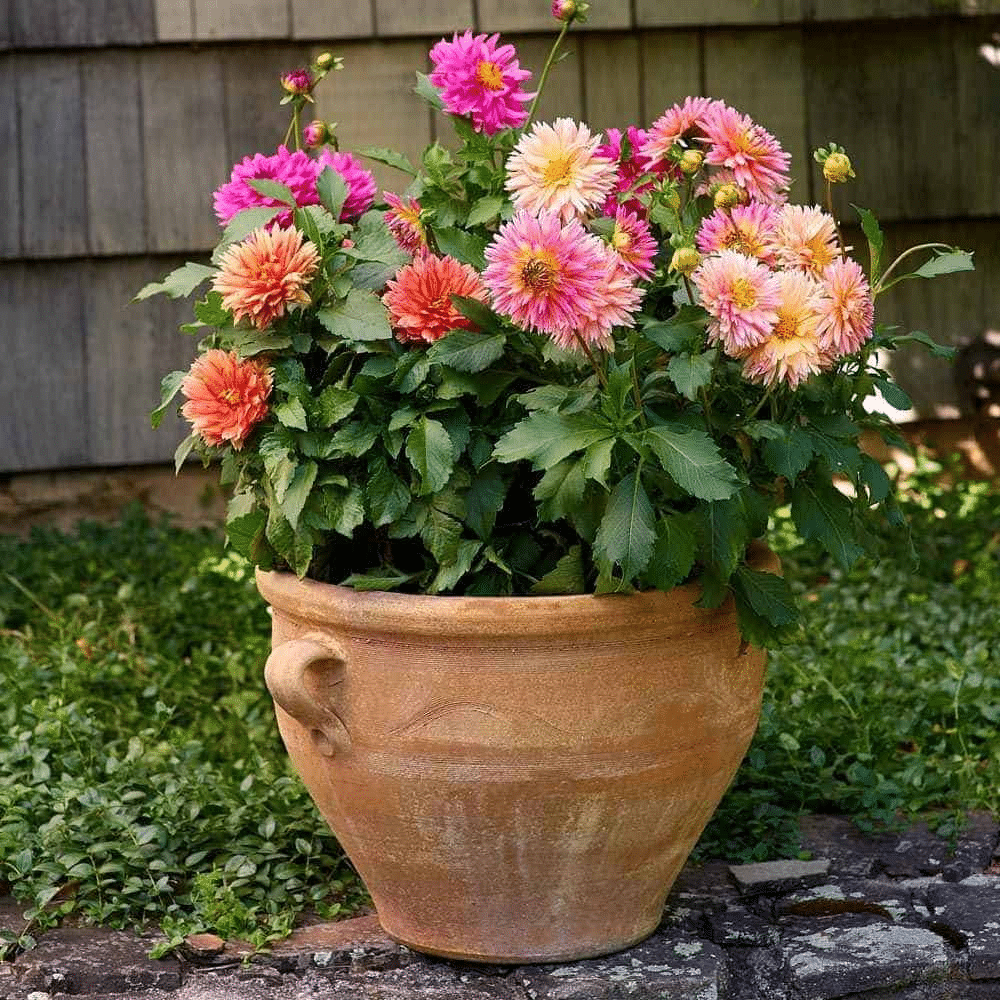
When planting Dahlias, ensure they are placed in well-drained soil and water them regularly.
Fertilizing every few weeks and deadheading spent blooms will result in a flourishing container grown dahlia, showcasing an abundance of beautiful flowers.
Medium-Sized Dahlias
For those with larger containers, medium-sized dahlias are an ideal option. These stunning flowers can grow up to 2 feet tall, with blooms measuring between 6-8 inches in diameter.

Medium-sized dahlias, such as ‘Happy Single First Love,’ ‘Impression Fabula,’ and ‘Art Deco,’ provide a dazzling display without overwhelming the space in a flower garden.
Preparing the Ideal Container
Now that you’ve chosen the perfect dahlia variety, it’s time to prepare the ideal container for your plants. The container you select will play a vital role in the overall health and success of your Dahlias, so it’s essential to consider factors such as:
Size
Depth
Drainage
Material options

Cleaning your container thoroughly before planting is crucial in preventing pests and diseases from affecting your Dahlias.
You may also consider placing your container plants on casters for easy moving, ensuring optimal sunlight exposure throughout the growing season.
Size and Depth
When growing dahlias in pots, the ideal container size is between 8 and 12 inches in diameter, with a depth of at least 40cm (15in). This will not only accommodate the Dahlia’s root system and support its growth, but also ensure the container is large enough for the plant to thrive.
If necessary, you can transplant your dahlia into a larger container or add soil to the bottom of the container to adjust the size and depth.
Drainage
Proper drainage is crucial for the health of your Dahlias, as it promotes healthy root growth and prevents root rot and fungal diseases. Oklahoma State University Extension recommends creating drainage holes in your container. It should comprise around 20% of the total bottom surface for optimal results.
Additionally, avoiding the use of stones or broken flower pot pieces to cover drainage holes can prevent water accumulation in the container, reducing the risk of root rot for your potted flowers.
Material Options
Containers for Dahlias come in various materials, such as:
Terra cotta: porous, keeping the soil moist and cool, and come in various shapes and sizes to suit your needs

Plastic: lightweight and durable, available in a wide range of colors and styles
Cement: sturdy and long-lasting, but can be heavy and difficult to move
Untreated wood: natural and rustic, but may require regular maintenance to prevent rot
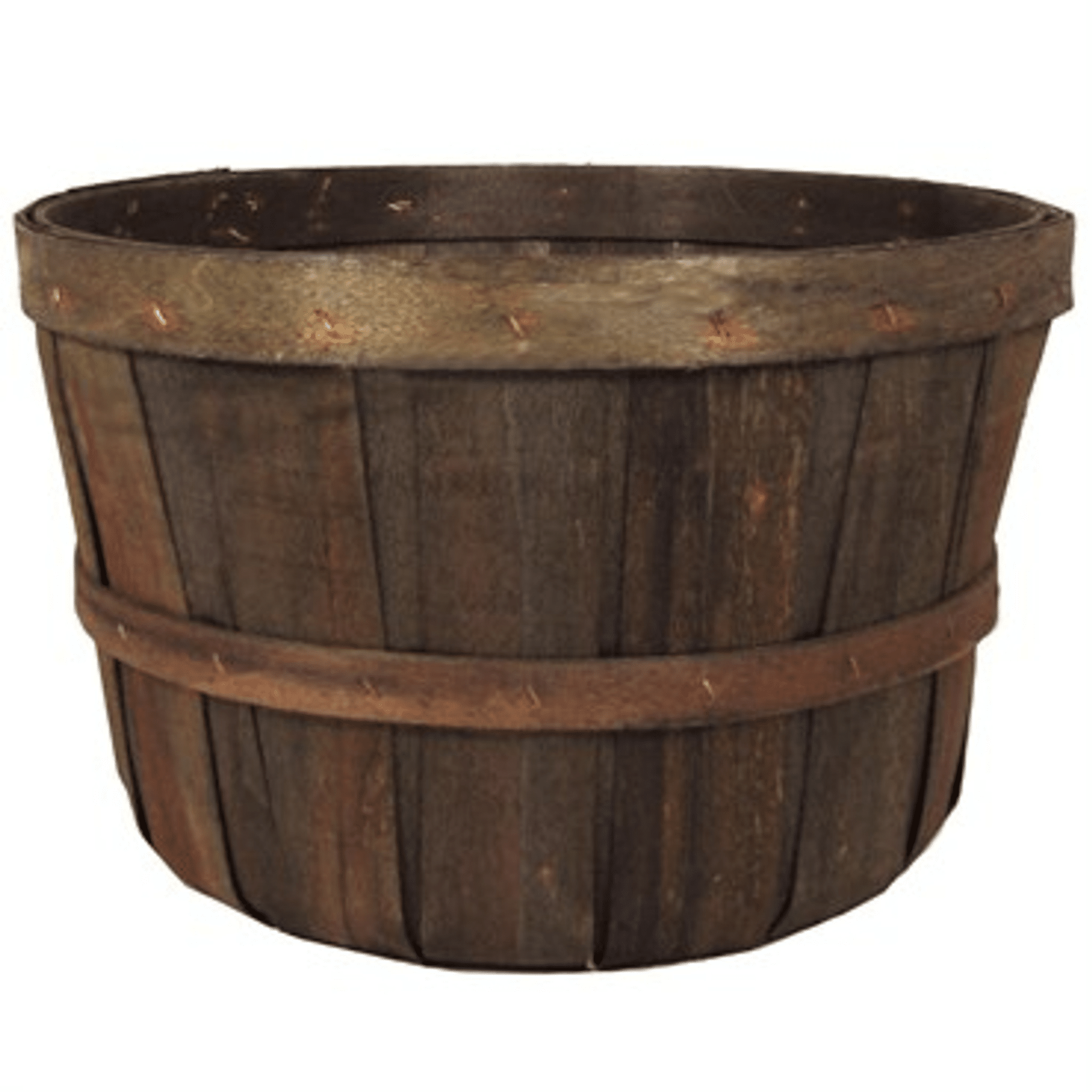
Choose the material that best suits your preferences and gardening needs.
Plastic containers are lightweight, easy to move, and affordable, while cement and untreated wood containers are durable and offer a range of shapes and sizes. Ultimately, the material you choose will depend on your personal preference and the specific needs of your daughter.
Potting Soil Essentials
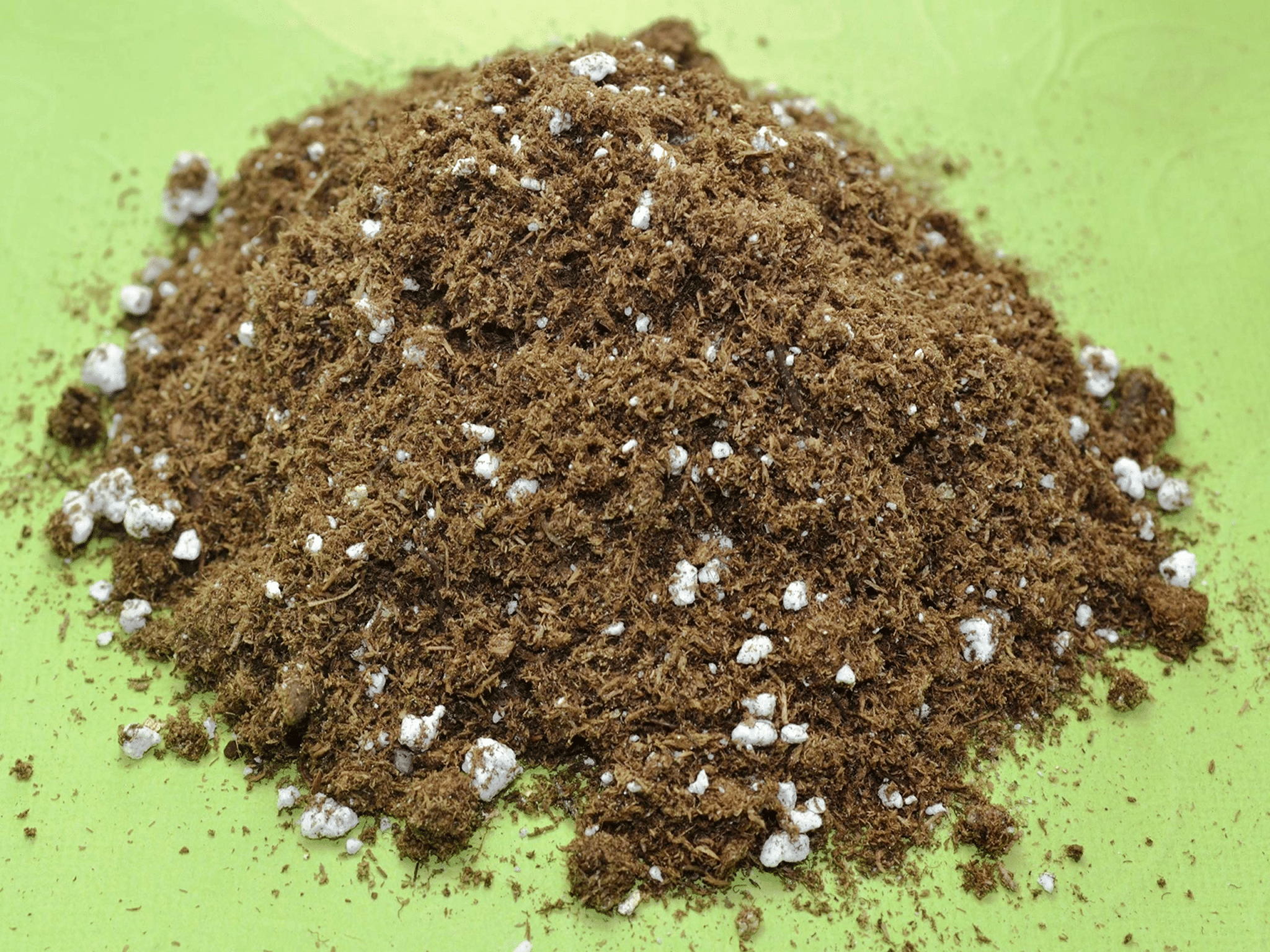
Selecting the right potting soil for your Dahlias is crucial for their overall health and growth. The ideal potting soil should offer excellent water retention, superb drainage, and rich nutrient content.
A great potting mix for dahlias often includes rice hulls, sphagnum moss, perlite, coconut coir or composted plant matter. Such a mix provides ideal growing conditions for the flowers. Additionally, ensuring the soil has a pH level of about 6.5 will help your Dahlias thrive.
Commercial potting soils, such as FoxFarm’s Ocean Potting Soil, are also a fantastic option for container growing. However, regardless of the soil you choose, it’s essential to monitor and adjust the water retention, drainage, and nutrient content as needed throughout the growing season.
Water Retention
Selecting a soil mix that retains moisture without becoming waterlogged is crucial for your Dahlias’ consistent hydration. Soil that is too wet can lead to root rot, while soil that dries out too quickly can cause your dahlias to wilt and struggle to thrive.
By using a soil mix that balances water retention and drainage, you can ensure that your dahlias receive the consistent hydration they need to grow healthy and vibrant blooms.
Drainage
As mentioned earlier, proper drainage is essential for your Dahlias’ health and growth. A well-draining potting mix can help prevent waterlogging and root rot, allowing your Dahlia plants to grow strong and healthy.
To improve drainage in your potting soil, consider amending it with sand or perlite, which can help maintain the right balance of moisture and aeration. If you find that you need more potting soil, simply add it to the mixture to achieve the desired consistency.
Nutrient Content
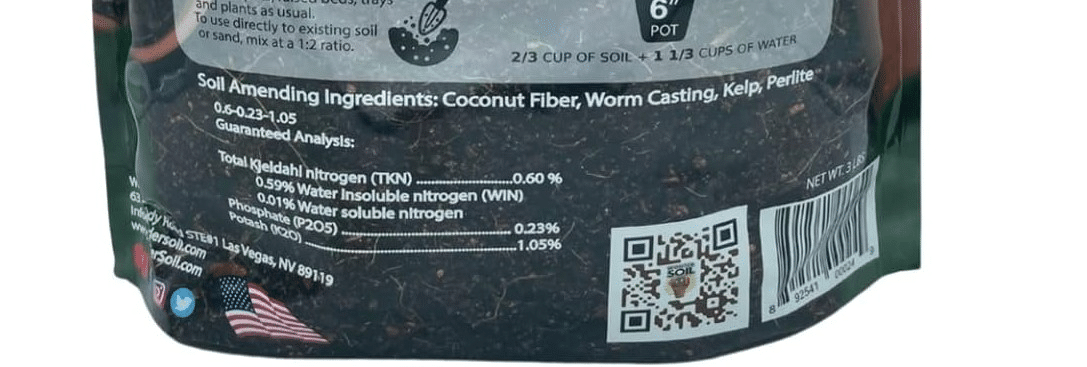
To ensure optimal growth and flowering, your Dahlias need:
A nutrient-rich soil with lots of organic matter
A low nitrogen fertilizer that is high in potassium and phosphorous
The ideal ratio of nutrients in a fertilizer for dahlias in pots is 5-10-10 or the equivalent.
Remember, providing your dahlias with the right nutrients is essential for their overall health and the production of beautiful, vibrant blooms.
Planting and Caring for Dahlias in Pots

Now that you have your perfect dahlia variety, container, and potting soil, it’s time to plant and care for your dahlias. Properly planting dahlia tubers, monitoring watering requirements, and providing appropriate fertilization are all essential steps to ensure the healthy growth and vibrant blooms of your dahlias.
Planting Dahlia tubers is a simple process. Start by digging a hole in the ground.
Planting Dahlia Tubers
Planting Dahlia tubers correctly is crucial for their healthy growth and development. Here are some steps to follow.
Plant the tubers at a depth of 4-6 inches.
Make sure the tuber’s eyes are facing up.
Space the tubers 8-12 inches apart to allow room for growth and to prevent overcrowding.

By following these steps, you can ensure that your dahlias will thrive and successfully grow dahlias in your garden.
Once your tubers are planted, water them thoroughly to help establish their roots and ensure a strong start to the growing season.
Watering Requirements
Monitoring the soil moisture and watering your Dahlias as needed is essential for their growth and health.
Dahlias in pots should be watered deeply and regularly, about 2-3 times a week once the stalk extends above the rim of the pot. The soil should be kept evenly moist to ensure the best results for your Dahlias.
In the early growing stages, water sparingly and allow the soil to dry out completely before the next watering to prevent root rot.
Fertilizing and Feeding
To promote strong growth and vibrant blooms, fertilize your dahlias with a balanced, slow-release fertilizer. Once the leaves start to appear, begin fertilizing your dahlias in pots approximately once a month.
The ideal fertilizer for dahlias is higher in phosphorus and potassium and lower in nitrogen, with a nutrient ratio of 4-10-10 or the equivalent.
Best Price on Lilly Miller Bulb & Bloom Food HERE
By providing the right nutrients, you can ensure the healthy growth and production of beautiful, vibrant flowers as the plant grows.
Supporting and Maintaining Dahlias in Containers
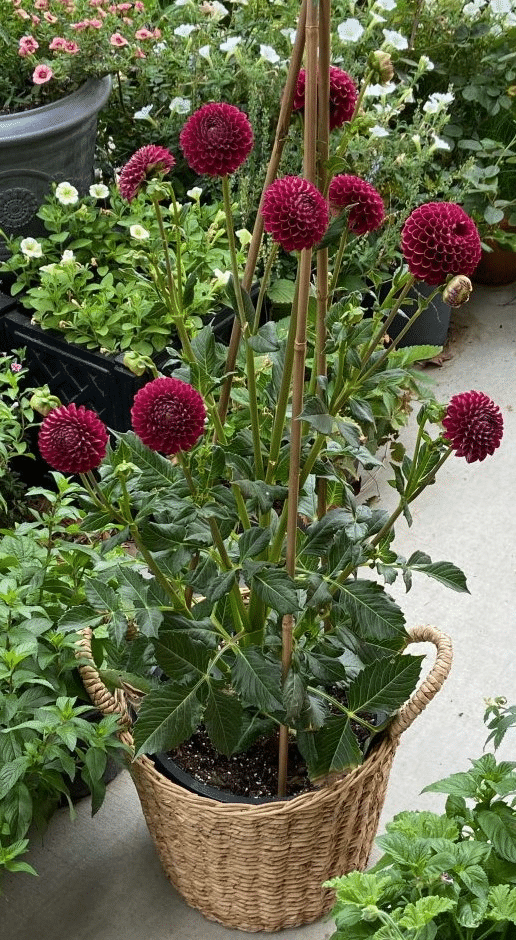
To keep your Dahlias looking their best, it’s essential to provide them with the support and maintenance they need. Staking, pruning, and deadheading are all crucial steps to ensure optimal growth and appearance of your Dahlias.
These steps should be done regularly throughout the growing season. Staking is important to keep the land.
Staking Dahlias
Taller dahlia varieties require support to prevent damage from wind or other disturbances. Here’s how to provide support for your daughters.
Choose a stake, cane, or cage of the same length as your mature dahlia variety.
Push the stake securely into the soil, about 4 inches away from the roots.
Use garden ties or cloth strips to secure the stems to the stake for a secure and successful result.
It’s best to place the stakes in the pot before the plant starts growing to maintain the roots undisturbed.
Pruning and Pinching
Pruning and pinching your dahlias can encourage bushier growth, stronger stems, and more abundant blooms. The plants need to be pinched back to a flower bud when they have grown between six inches and a foot tall. This will help them grow fuller and more robust.
Additionally, pruning and pinching can help maintain a more pleasing shape and appearance for your dahlias, ensuring that they remain the focal point of your container garden.
Deadheading Blooms
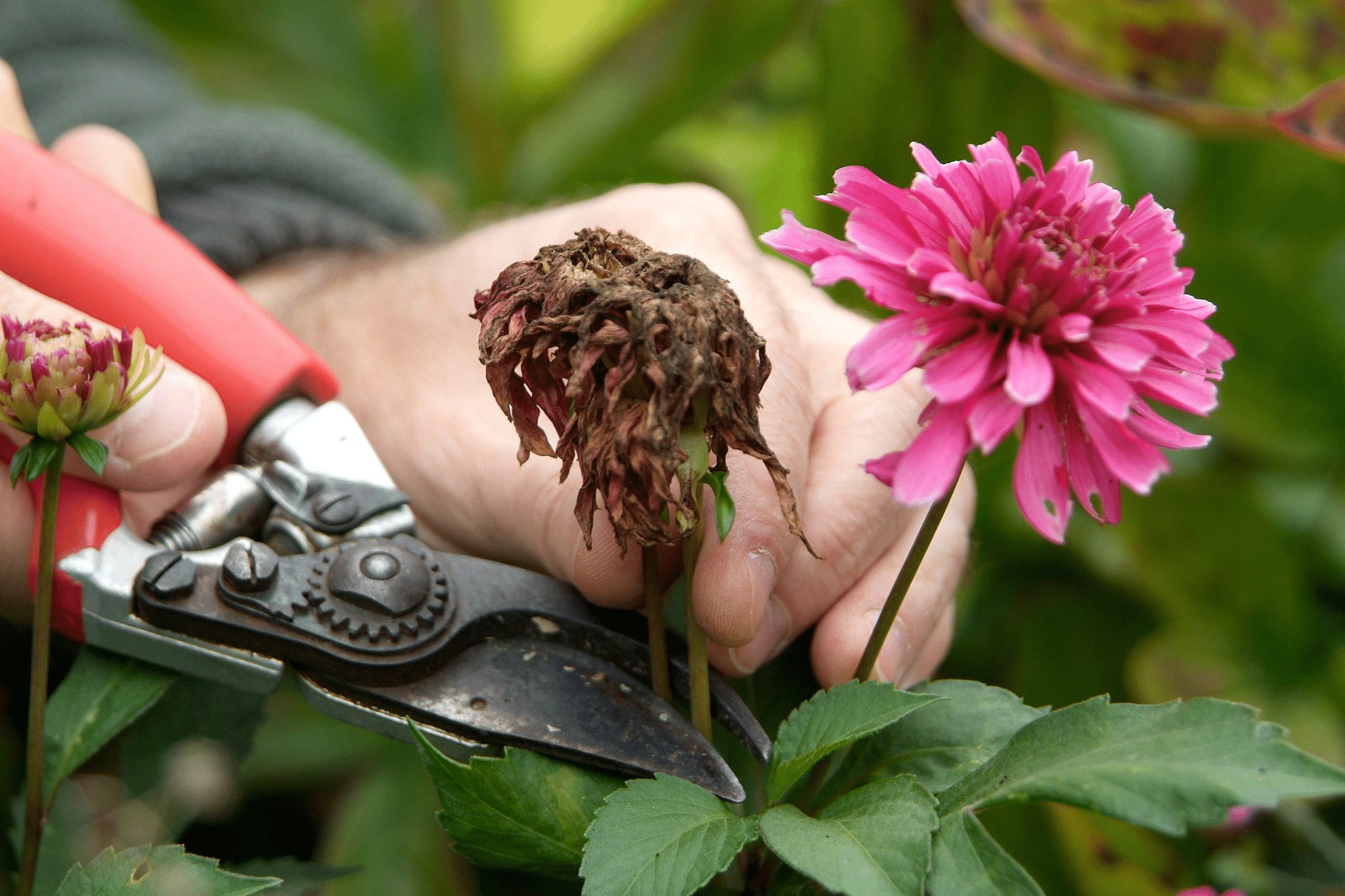
Deadheading spent blooms is essential for maintaining a tidy appearance and promoting continuous flowering. To deadhead your dahlias, use a pair of sharp scissors or pruners to cut off the spent flower head at the base of the stem. Cutting the stem at an angle will also help prevent water from collecting in the cut.
Regular deadheading will encourage your dahlias to produce more blooms and extend their flowering season, ensuring a vibrant and cheerful display throughout the season.
Overwintering Dahlias in Pots

As the growing season comes to an end, it’s essential to prepare your dahlias for the colder months. Overwintering dahlias in pots involves cutting back foliage, storing the containers in a cool location, and providing minimal watering during dormancy.
To overwinter your Dahlias, follow these steps:
After the first frost kills the leaves, cut back the foliage.
Carefully dig out the tubers.
Store the tubers in peat moss for the winter season.
Give your dahlias a cup of water once a month to maintain their health during dormancy.
When early spring arrives, you can replant your dahlia tubers and enjoy their stunning blooms once again.
Troubleshooting Common Dahlia Problems
Growing dahlias in containers offers many advantages, but like any plant, they can still face common problems such as pests, diseases, and environmental issues. Being aware of these issues and knowing how to address them will help ensure the healthy growth and vibrant blooms of your Dahlias.
Some common dahlia problems include pests like tarnished plant bugs, diseases like stem rot and mosaic virus, and overwatering or poor soil drainage. Growing dahlias in containers can help protect them from pests and diseases, while the right potting soil and adequate watering can prevent environmental issues.
If you encounter any issues, using insecticides or fungicides as needed can help keep your Dahlias healthy and thriving.
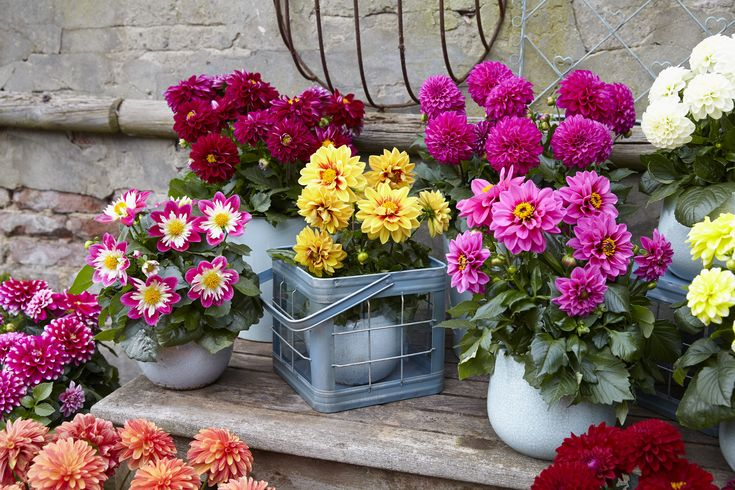
Summary
By following this comprehensive guide, you are now well-equipped to embark on your own journey of growing dahlias in containers. From selecting the perfect dahlia variety and container to mastering the art of planting, watering, and maintenance, you have all the knowledge you need to cultivate a captivating array of dahlias that will bring life and color to any space.
As you watch your dahlias grow and flourish, enjoy the satisfaction of knowing that you have created a beautiful, thriving container garden with your own hands. Embrace the vibrant world of dahlias and let their stunning blooms inspire you to continue exploring the endless possibilities of container gardening.
Frequently Asked Questions
Do dahlias grow well in pots?
Yes, Dahlias can thrive in pots! Select a compact variety that’s right for your space and make sure to provide enough soil and regular feeding for successful growth.
Dahlias can be started indoors and then transplanted outdoors, or kept in a pot all season long.
How do you care for dahlias in pots?
To keep your Dahlias healthy and thriving in pots, ensure you water them regularly, keeping the soil moist but not soggy. Provide full sun for optimal blooming and use a stake to support the plants during windy days or when heavy blooms appear. Additionally, feed your dahlias with a balanced fertilizer every two weeks throughout the summer.
Caring for dahlias in pots requires regular watering, providing full sun, supporting with a stake, and feeding them with a balanced fertilizer every two weeks throughout the summer. If temperatures soar, you can move the Dahlias to a spot that gets some afternoon shade and water them more frequently in dry spells.
Can you leave dahlias in pots over winter?
Yes, you can leave Dahlias in pots over winter! Make sure to keep the pot in a cool, dry, and dark place that does not freeze.
Furthermore, make sure the Dahlias are not exposed to any excess water over winter.
Do dahlias in pots come back every year?
Yes, Dahlias in pots can come back every year with proper care. Dahlias are perennials, and a cool-weather planting schedule in the late fall or early winter will ensure their return next season.
If you live in a warmer climate, you can provide extra protection for your dahlias during the winter months to help them survive and bloom again in the spring.
Are dahlias perennial?
Yes, dahlias are perennial flowers that return year after year. They bloom from late spring through early fall in a variety of bright and beautiful colors.
If you take proper care of them, you can enjoy these vibrant blooms for years to come.

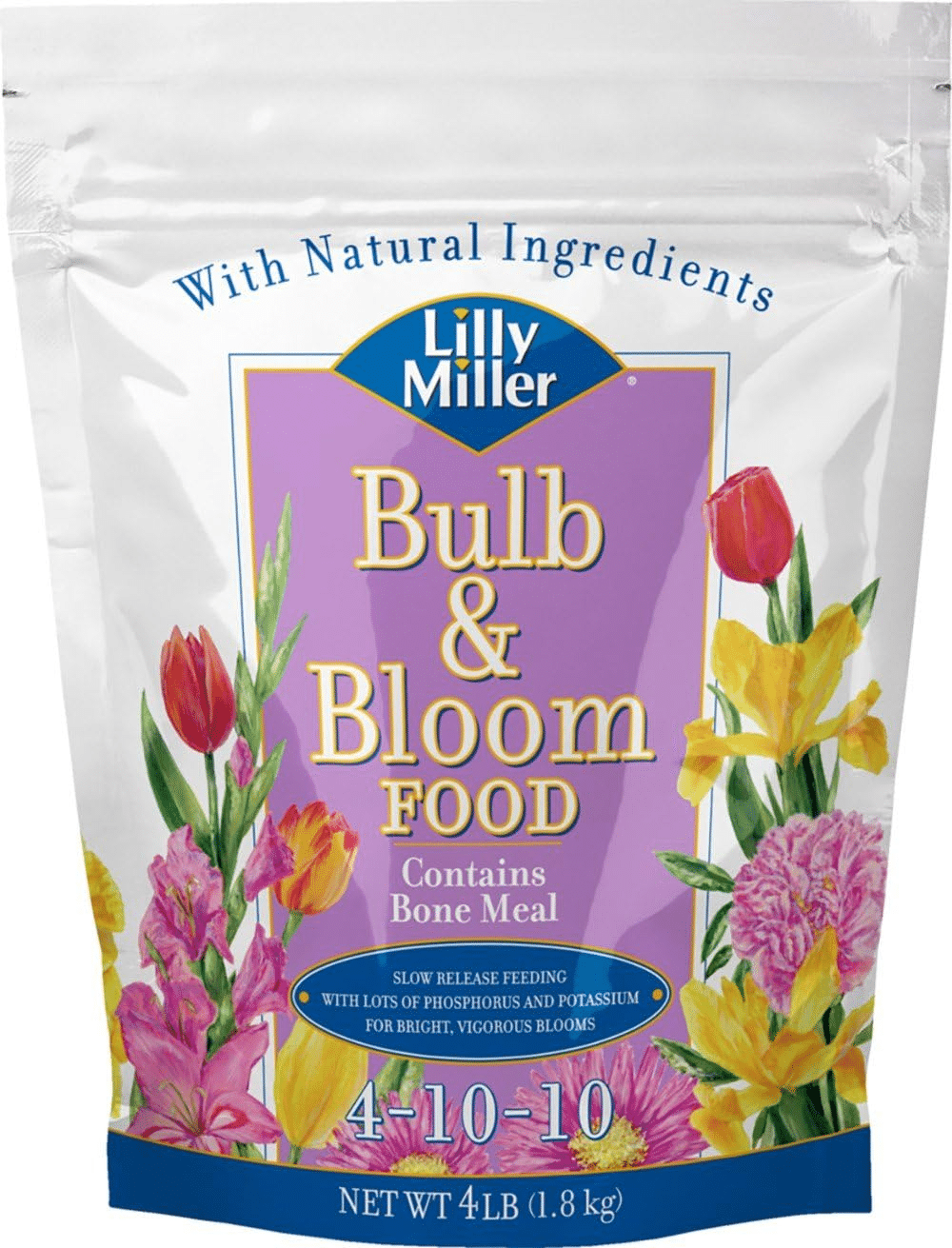
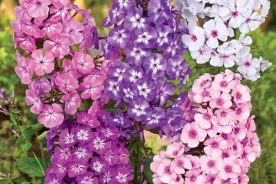



No Comments